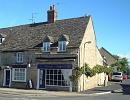Contact Seller
Harveys Antiques
Tel01993 706 501Please quote Antiques Atlas.


 Antique French Amboyna and Rosewood Escritoire
Antique French Amboyna and Rosewood Escritoire
 Antique Quality Writing Dressing Table 19th C
Antique Quality Writing Dressing Table 19th C
 Antique Writing Dressing Table 19th Century
Antique Writing Dressing Table 19th Century
 Antique Oak Writing Dressing table
Antique Oak Writing Dressing table
 Antique Mahogany Writing Dressing Table
Antique Mahogany Writing Dressing Table
 Antique Mahogany Writing Dressing Table
Antique Mahogany Writing Dressing Table
 Antique Bow Front Mahogany Writing Table
Antique Bow Front Mahogany Writing Table
 Antique Inlaid Mahogany Writing Table
Antique Inlaid Mahogany Writing Table
 Antique Mahogany Writing Dressing Table Desk
Antique Mahogany Writing Dressing Table Desk
 Antique Mahogany Writing Dressing Table
Antique Mahogany Writing Dressing Table
 Antique Quality Mahogany Writing Dressing Table
Antique Quality Mahogany Writing Dressing Table
 Edwardian Mahogany Knee Hole Desk
Edwardian Mahogany Knee Hole Desk
Non UK callers :
+44 1993 706 501
William and Mary Period Burr Walnut Escritoire


An important William and Mary Period Burr Walnut Fall Front Escritoire with a convex “bible drawer” beneath a shaped, moulded cornice, the fall front opening to reveal 9 removable pigeon holes with secret compartments behind and an arrangement of drawers around a central cupboard containing a removable box revealing 3 further secret drawers, the right hand bottom drawer with a removable floor with a hidden compartment, the fall front fitted with a reading stand, the base with two half width and two full width drawers all raised on bun feet. This piece is feather banded throughout.
Circa 1690
Price :£ 25,000-00p.
Height: 68”, 173cms, Wdth: 46”, 117 cms, Depth :20.5”, 52 cms.
Lit: See ”English Furniture 1660 -1714 From Charles II to Queen Anne”, by Adam Bowett, Chapter seven, for an almost identical example by John Guilbaud see plate 7:14 pages 203 to 210.
SellerHarveys Antiques
View all stock from
Harveys Antiques

 W.R.Harvey & Co. (Antiques) Ltd.
W.R.Harvey & Co. (Antiques) Ltd.
86 Corn Street
Witney
Oxfordshire
OX28 6BU
Tel : 01993 706 501
Non UK callers : +44 1993 706 501
Get directions to Harveys Antiques
Circa 1690
Price :£ 25,000-00p.
Height: 68”, 173cms, Wdth: 46”, 117 cms, Depth :20.5”, 52 cms.
Lit: See ”English Furniture 1660 -1714 From Charles II to Queen Anne”, by Adam Bowett, Chapter seven, for an almost identical example by John Guilbaud see plate 7:14 pages 203 to 210.
Price The price has been listed in British Pounds.
Conversion rates as of 15/JAN/2025. Euro & Dollar prices will vary and should only be used as a guide.
Always confirm final price with dealer.
Category Antique Furniture
Date Circa 1690
Material Burr Walnut
Origin English
Item code as722a517 / 409F
Status Sold
£25000.00 
$30645.00 
€29735.00 

$

€

Conversion rates as of 15/JAN/2025. Euro & Dollar prices will vary and should only be used as a guide.
Always confirm final price with dealer.
View all stock from
Harveys Antiques

 W.R.Harvey & Co. (Antiques) Ltd.
W.R.Harvey & Co. (Antiques) Ltd.86 Corn Street
Witney
Oxfordshire
OX28 6BU
Tel : 01993 706 501
Non UK callers : +44 1993 706 501
Get directions to Harveys Antiques
You may also be interested in
 Antique French Amboyna and Rosewood Escritoire
Antique French Amboyna and Rosewood Escritoire
 Antique Quality Writing Dressing Table 19th C
Antique Quality Writing Dressing Table 19th C
 Antique Writing Dressing Table 19th Century
Antique Writing Dressing Table 19th Century
 Antique Oak Writing Dressing table
Antique Oak Writing Dressing table
 Antique Mahogany Writing Dressing Table
Antique Mahogany Writing Dressing Table
 Antique Mahogany Writing Dressing Table
Antique Mahogany Writing Dressing Table
 Antique Bow Front Mahogany Writing Table
Antique Bow Front Mahogany Writing Table
 Antique Inlaid Mahogany Writing Table
Antique Inlaid Mahogany Writing Table
 Antique Mahogany Writing Dressing Table Desk
Antique Mahogany Writing Dressing Table Desk
 Antique Mahogany Writing Dressing Table
Antique Mahogany Writing Dressing Table
 Antique Quality Mahogany Writing Dressing Table
Antique Quality Mahogany Writing Dressing Table
 Edwardian Mahogany Knee Hole Desk
Edwardian Mahogany Knee Hole Desk







